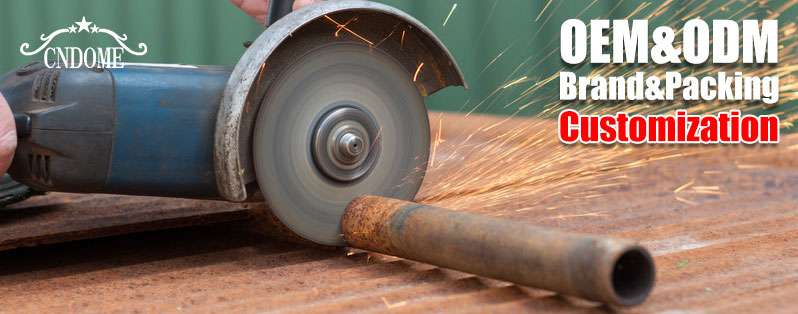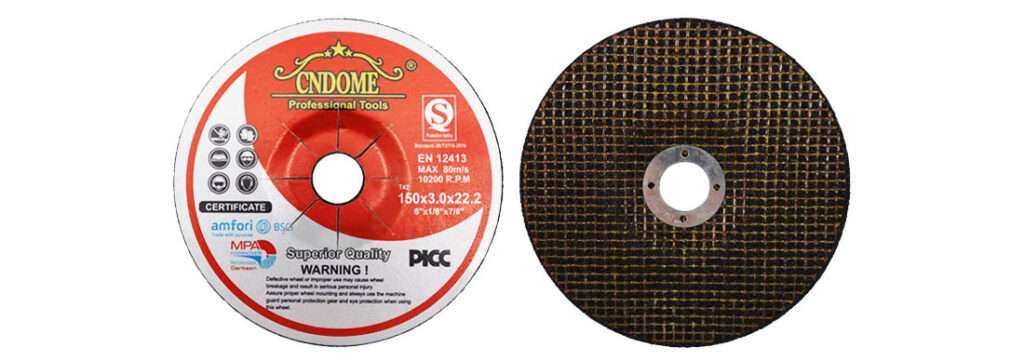Cutting discs are indispensable tools in various industries, from metal fabrication to construction. However, understanding their service life is crucial for maximizing efficiency and ensuring safety. In this blog, we will explore the factors that influence the service life of cutting discs and offer practical tips to extend their usage.
1. Material Type and Composition
- The type of material being cut significantly impacts the lifespan of a cutting disc. Harder materials like stainless steel or cast iron tend to wear down discs faster compared to softer materials like aluminum or mild steel.
- The composition of the cutting disc itself—such as the type of abrasive grain (e.g., aluminum oxide, silicon carbide) and bonding material—also determines durability. High-quality discs designed for specific materials often last longer.
2. Cutting Speed and Pressure
- The speed at which the disc operates and the pressure applied during cutting are critical factors. Excessive speed can generate too much heat, leading to rapid wear and potential disc failure. Conversely, applying too much pressure can cause uneven wear and damage to the disc.
- Maintaining an optimal cutting speed and applying consistent, moderate pressure can help prolong the disc’s service life.
3. Machine Compatibility and Maintenance
- Using the right cutting disc for your specific machine is essential. Discs that are not compatible with the machine’s RPM (Revolutions Per Minute) rating can wear out prematurely or even break.
- Regular maintenance of the cutting machine, including checking for alignment and ensuring that guards and flanges are in good condition, can prevent unnecessary strain on the disc.
4. Operating Conditions
- Environmental factors like temperature, humidity, and the presence of dust or moisture can affect the performance and longevity of cutting discs. High temperatures can cause discs to soften, while moisture can lead to corrosion and weakening of the disc’s structure.
- Store discs in a cool, dry place to avoid degradation over time.
5. User Technique and Experience
- The way a user handles the cutting disc can greatly influence its service life. Experienced users who follow best practices, such as avoiding excessive side pressure and using the disc only for its intended purpose, generally achieve longer disc life.
- Training and experience play a vital role in ensuring that the disc is used efficiently and safely.
6. Signs of Wear and When to Replace
- It’s important to regularly inspect cutting discs for signs of wear, such as reduced cutting efficiency, visible cracks, or changes in disc shape. Using a worn-out disc can lead to poor cuts and increase the risk of accidents.
- Replace the disc as soon as it shows significant signs of wear or damage to ensure both the quality of work and the safety of the operator.
7. Tips for Prolonging Cutting Disc Life
- Choose the right disc: Select a cutting disc that is designed for the material you are working with.
- Proper storage: Keep discs in a dry, cool environment to prevent premature degradation.
- Regular machine maintenance: Ensure that your cutting equipment is well-maintained to avoid unnecessary strain on the disc.
- Optimal cutting techniques: Use the correct speed, pressure, and angle to minimize wear.
- Monitor disc condition: Regularly check for signs of wear and replace the disc when necessary.
Conclusion
The service life of cutting discs is influenced by multiple factors, including the material being cut, the speed and pressure of cutting, machine compatibility, operating conditions, and user technique. By understanding these factors and following the tips provided, you can extend the life of your cutting discs, ensuring efficient and safe operation.



